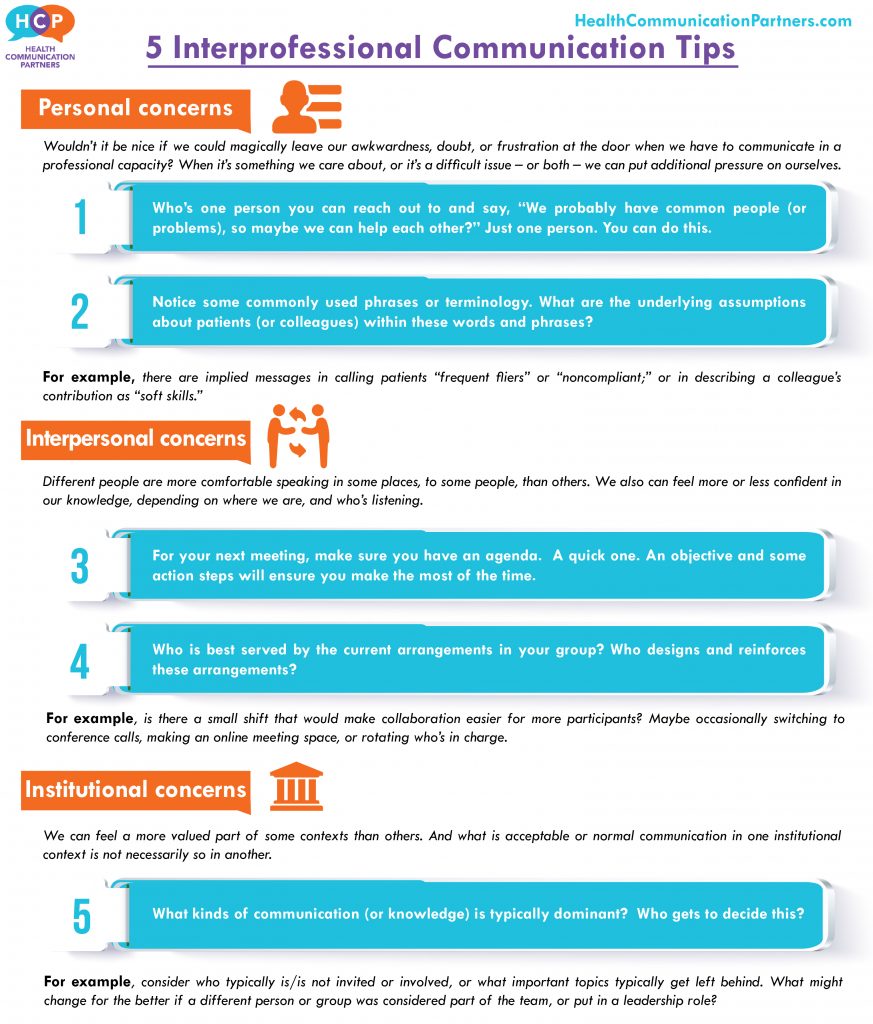Communicating well with professionals in and beyond our usual sphere is an essential skill.
And it’s close to my heart. Like many of you, I do it every day.
It’s tricky work. I like to think I’ve gotten better at it over time, but it can still get me queasy and second-guess-y.
I’ve written and podcasted about some of what I’ve learned, and what health professionals have shared with me, about some challenges we may face during interprofessional communication.
In these challenges, I’ve identified three clusters: personal concerns, interpersonal concerns, and organizational concerns. I then developed steps you can take, and questions you can ask, to help you manage each of these concerns.
Here it is all together, in a handy infographic.
Enjoy 🙂


